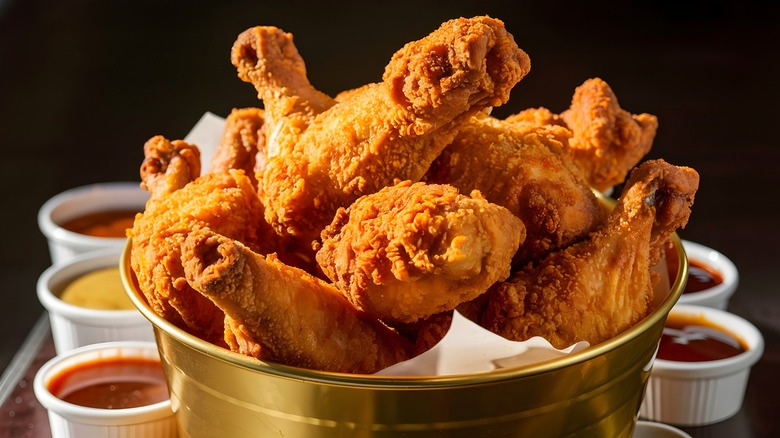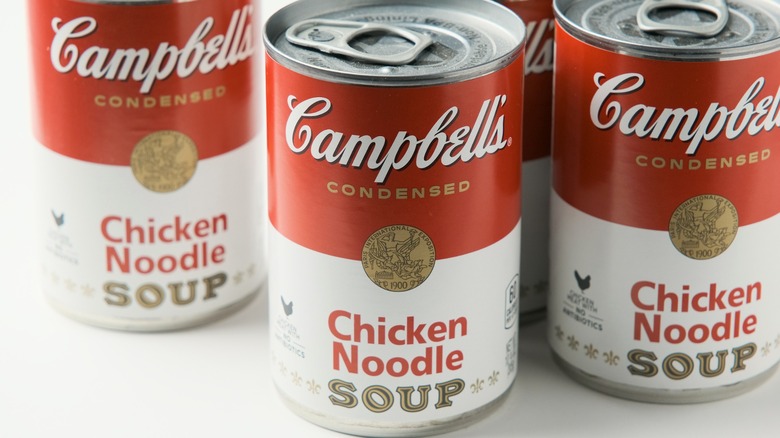For The Best Fried Chicken, Use An Umami-Boosting Ingredient
Fried chicken is a humble comfort food at its core, but that doesn't stop chefs and home cooks alike from trying to elevate this fare anytime the opportunity presents itself. Still, achieving glory takes more than just avoiding common fried chicken mistakes. People have different philosophies regarding which ingredients take the meal to the next level, but if you want to specifically upgrade the savory umami flavor in the dish, a once-controversial ingredient should be on your next shopping list.
Throwing some monosodium glutamate, typically known as MSG, in the chicken's seasoning mix before it is breaded and fried makes the dish ultra-savory – something every fried chicken enthusiast strives to achieve. In turn, MSG is heralded by many chefs as the ultimate umami booster and can be used in tandem with other spices and aromatic herbs to impart a complex and satisfying eating experience. Just a small amount will work, so start with a tad (¼ teaspoon per pound of chicken is a good start) and work your way up from there.
Unfortunately, many home cooks don't consider MSG because the ingredient fell out of favor with many American consumers after the 1960s, when some claimed it caused health problems. Today, the FDA says the MSG is "generally recognized as safe" and multiple studies have found no proven link between MSG and health issues. Still, for years, the ingredient got a bad rap and folks falsely believed that Asian restaurants were making people ill via MSG in the food. It's a shame because people overlooked an excellent flavor enhancer for decades.
Why MSG is already in many popular foods
Though some people still view MSG in a negative light, the ingredient is used by many popular restaurants and brands. While McDonald's freshly cooked Quarter Pounder with Cheese doesn't contain MSG, the beloved McCrispy does. If you want a fried chicken sandwich from Chick-fil-A, you will be getting the umami-boosting ingredient in that meal as well. KFC uses MSG to make its signature product taste as savory as can be, while Burger King uses it in part to reduce the sodium content of its food, something customers have demanded for some time.
MSG imparts a savory flavor to food while reducing the actual sodium content compared to table salt. "Low-sodium" products in the grocery store commonly have MSG because producers are attempting to meet both customer demands for reduced sodium while still appealing to established tastes. Even items that don't boast low sodium use it to amp up the umami factor, with products like Campbell's Chicken Noodle Soup and Doritos listing it as an ingredient on nutrition labels.
Whatever preconceived notions one might have about MSG, many folks have been consuming it for years without even realizing it. It's entirely likely that if MSG was banned like red dye no. 3, people would wonder why their favorite eats suddenly lack flavor. Your secret ingredient for stellar fried chicken would be sorely missed, but MSG is making a comeback these days, and our taste buds are here for it.

